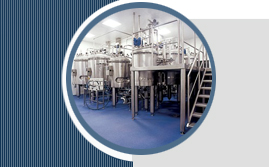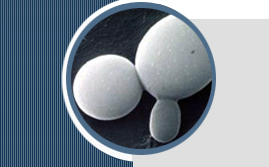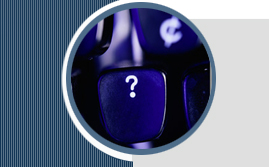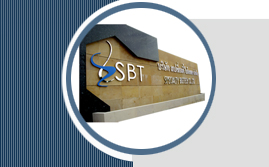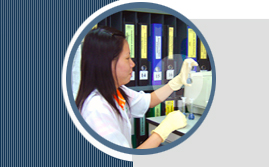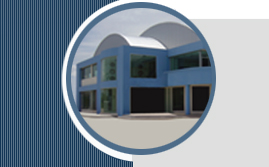| |
Human
-ß-Glucan, a “Specific” Biologic Response Modifier That Uses Antibodies to Target Tumors for Cytotoxic Recognition by Leukocyte Complement Receptor Type 3 (CD11b/CD18). (For more detail please visit http://www.jimmunol.org/) -Antigen-specific response of murine immune system toward a yeast ß-glucan preparation, zymosan. (For more detail please visit http://www.sciencedirect.com/science/journal/09288244)
-Therapeutic intervention with complement and ß-glucan in cancer. (For more detail please visit http://www.sciencedirect.com/science/journal/01623109)
-Glucans exhibit weak antioxidant and activity, but stimulate mmacrophage free radical activity. (For more detail please visit http:// www.elsevier.com/locate/freeradbiomed)
-Glucan as stimulator of hematopoiesis in normal and gamma-irradiated mice. A survey of the authors’results.(Formoredetail please visit http://www.sciencedirect.com/science/journal/01920561)
-Dectin-1 Is A Major ß-Glucan Receptor On Macrophages. (For more detail please visit http://www.jem.org/cgi/doi/10.1084/jem.20020470)
-Characterization of the Human ß-Glucan Receptor and Its Alternatively Spliced Isoforms. (For more detail please visit http://www.jbc.org)
-The ß-Glucan-Binding Lectin Site of Mouse CR3 (CD11b/CD18) and Its Function in Generating a Primed State of the Receptor That Mediates Cytotoxic Activation in Response to iC3b-Opsonized Target Cells. (For more detail please visit http://www.jimmunol.org/)
-Dectin-1 and its role in the recognition of ß -glucans by macrophages. (For more detail please visit http:// www.elsevier.com/locate/molimm)
- Immunopotentiation of intraepithelial lymphocytes in the intestine by oral administrations of ß -glucan. (For more detail please visit http:// www.elsevier.com/locate/ycimm)
ß-Glucan, a “Specific” Biologic Response Modifier That Uses
Antibodies to Target Tumors for Cytotoxic Recognition by
Leukocyte Complement Receptor Type 3 (CD11b/CD18)
Jun Yan, Va´clav Veˇtvicˇka, Yu Xia, Angela Coxon, Michael C. Carroll,
Tanya N. Mayadas, and Gordon D. Ross
Division of Experimental Immunology and Immunopathology, Department of Pathology, and Department of Microbiology and Immunology, University of Louisville, Louisville, KY 40292;
ABSTRACT
ß-Glucans were identified 36 years ago as a biologic response modifier that stimulated tumor rejection. In vitro studies have shown that ß-glucans bind to a lectin domain within complement receptor type 3 (CR3; known also as Mac-1, CD11b/CD18, or aMb2-integrin, that functions as an adhesion molecule and a receptor for factor I-cleaved C3b, i.e., iC3b) resulting in the priming of this iC3b receptor for cytotoxicity of iC3b-opsonized target cells. This investigation explored mechanisms of tumor therapy with soluble ß-glucan in mice. Normal mouse sera were shown to contain low levels of Abs reactive with syngeneic or allogeneic tumor lines that activated complement, depositing C3 onto tumors. Implanted tumors became coated with IgM, IgG, and C3, and the absent C3 deposition on tumors in SCID mice was reconstituted with IgM or IgG isolated from normal sera. Therapy of mice with glucan- or mannan-rich soluble polysaccharides exhibiting high affinity for CR3 caused a 57–90% reduction in tumor weight. In young mice with lower levels of tumor-reactive Abs, the effectiveness of ß-glucan was enhanced by administration of a tumorspecific mAb, and in SCID mice, an absent response to ß-glucan was reconstituted with normal IgM or IgG. The requirement for C3 on tumors and CR3 on leukocytes was highlighted by therapy failures in C3- or CR3-deficient mice. Thus, the tumoricidal function of CR3-binding polysaccharides such as b-glucan in vivo is defined by natural and elicited Abs that direct iC3b deposition onto neoplastic cells, making them targets for circulating leukocytes bearing polysaccharide-primed CR3. Therapy fails when tumors lack iC3b, but can be restored by tumor-specific Abs that deposit iC3b onto the tumors.
Credited by:
© 1999 by The American Association of Immunologists The Journal of Immunology 163 (1999), 3045–3052
Antigen-specific response of murine immune system toward a
yeast ß-glucan preparation, zymosan
T. Miura a ; b , N. Ohno a , N.N. Miura a , Y. Adachi a , S. Shimada b , T. Yadomae a
a Laboratory for Immunopharmacology of Microbial Products, School of Pharmacy, Tokyo University of Pharmacy and Life Science, 1432-1 Horinouchi, Hachioji, Tokyo 192-0392, Japan
b Kitasato University Hospital, Department of Pharmacy, 1-15-1 Kitasato, Sagamihara, Kanagawa 229, Japan
ABSTRACT
Zymosan, a particulate ß-glucan preparation from Saccharomyces cerevisiae, shows various biological activities, including anti-tumor activity. We have previously shown that soluble ß-glucan initiated anti-tumor activity was long-lived and was effective even by prophylactic treatment at 1 month prior to tumor challenge. However, the activity by zymosan was relatively short-lived. Antigen-specific responses of mice to zymosan might be a causative mechanism. In this paper, mice were immunized with zymosan and antibody production and antigen-specific responses of lymphocytes to zymosan were analyzed. Sera of zymosan immune mice contained zymosan-specific IgG assessed by enzyme-linked immunosorbent assay and FACS. Spleen and bone marrow cells of zymosan-immune mice showed higher cytokine production in response to zymosan. Specificity of zymosan-specific responses were also analyzed using various derivatives prepared from zymosan. These facts strongly suggested that mice recognize zymosan as antigen in addition to non-specific immune stimulant.
Keywords: ß-Glucan; Zymosan; Anti-zymosan antibody; Antigen specific
Credited by:
© 1999 Federation of European Microbiological Societies. Published by Elsevier Science B.V. All rights reserved.
FEMS Immunology and Medical Microbiology 24 (1999), 131-139
Therapeutic intervention with complement and ß-glucan in cancer
Gordon D. Ross, Vaclav Vetvicka, Jun Yan, Yu Xia, Jana Vetvickova
DiÍision of Experimental Immunology and Immunopathology, Department of Pathology, and Department of Microbiology and Immunology, UniÍersity of LouisÍille, LouisÍille, KY 40292, USA
ABSTRACT
Complement C has two major effector systems available for host defense. The membrane attack complex MAC generated from components C5–C9 can form membrane-penetrating lesions that lead to cell death by causing a rapid loss of cytoplasmic components. The MAC is only effective against pathogens with outer phospholipid membranes, and cannot kill Gram-positive bacteria or yeast whose membranes are protected by cell walls. The most important effector mechanism of C is the opsonization of microbial pathogens with the serum protein C3 that leads to their high avidity attachment to the C3-receptors of phagocytic cells. Pathogens that activate complement are first coated with the C3b fragment of C3, which is rapidly proteolyzed into the iC3b fragment by serum factor I. These iC3b fragments serve to promote the high avidity attachment of the ‘iC3b-opsonized’ pathogens to the iC3b-receptors CR3, CD11brCD18 of phagocytic cells and natural killer NK cells, stimulating phagocytosis andror cytotoxic degranulation. Host cells, including neoplastic tumor cells, have been endowed with natural mechanisms for self-protection against both the MAC and the cytotoxic activation of CR3. This review discusses a novel type of immunotherapy for cancer that uses soluble yeast b-glucan to override the normal resistance of iC3b-opsonized tumor cells to the cytotoxic activation of phagocyte and NK cell CR3, allowing this important effector mechanism of the C system to function against tumor cells in the same way that it normally functions against bacteria and yeast. Moreover, the cytotoxic activation of b-glucan-primed NK cell CR3 by iC3b-opsonized tumors is shown to be accompanied by a tumor-localized secretion of the cytokines TNFα, IFNα, IFNγ, and IL-6.
Keywords: Complement; Immunomodulators; Tumor immunity; Immunotherapy; Cytokines
Credited by:
© 1999 Elsevier Science B.V. All rights reserved. Immunopharmacology 42 (1999), 61–74
Glucans exhibit weak antioxidant and activity, but stimulate mmacrophage free radical activity
EKATERINI TSIAPALI,* SARAH WHALEY,* JOHN KALBFLEISCH,† HARRY E. ENSLEY,*‡ I. WILLIAM BROWDER,* and DAVID L. WILLIAMS*
*Departments of Surgery and †Medical Education, James H. Quillen College of Medicine, East Tennessee State University, Johnson City, TN, USA; and ‡Department of Chemistry, Tulane University, New Orleans, LA, USA
ABSTRACT
Polymeric carbohydrates have been reported to modulate inflammatory responses in vitro and in vivo. Previous reports suggest that certain carbohydrate polymers, such as (1→3)-β-D-glucans, may possess free radical scavenging activity. If glucans are free radical scavengers then it might explain, in part, the ability of these ligands to modulate inflammatory responses. The present study examined the free radical scavenging activity of a variety of carbohydrate polymers and the effect of the polymers on free radical levels in a murine macrophage cell line. All of the carbohydrates exhibited concentration dependent antioxidant effects (EC50 range = 807 to 43 mg/ml). However, the antioxidant activity for the carbohydrates was modest in comparison with PDTC (EC 50 = 0.13 mg/ml) and the carbohydrate concentration required for antioxidant activity was high (mean EC 50 = 283 mg/ml). The antioxidant ability of the polymers was greater (p < 0.05) than their monosaccharide constituents, i.e., dextrose EC 50 = 807 vs. glucan sulfate EC50 = 43 mg/ml. Coincubation of glucans with murine J774a.1 cells increased free radical levels when compared to controls. Therefore, the weak free radical scavenging activity of glucan polymers cannot explain their modulatory effect on inflammatory responses in tissue culture and/or disease models of inflammation.
Keywords: Antioxidant, Glucan, Polymer, Macrophage, Carbohydrate, Free radicals
Credited by:
© 2001 Elsevier Science Inc. Free Radical Biology & Medicine 30 (2001), 393–402
Glucan as stimulator of hematopoiesis in normal and gamma-irradiated mice. A survey of the authors’ results
M. HOFER and M. POSPISIL
Institute of Biophysics, Academy of Sciences of the Czech Republic, Krfilovopolskfi 135, 612 65 Brno,
Czech Republic
ABSTRACT
Glucan, a beta-l,3-1inked polyglucose derived from the yeast Saccharomyces cerevisiae, is a broad spectrum enhancer of host defense mechanisms stimulating humoral and cell-mediated immunity. On the basis of these features, glucan has been tested by the authors' research group in experiments on gamma-irradiated mice. Two glucan forms, particulate and soluble, have been studied. Attention has been focused on various application regimens in relation to the time of irradiation (pre- or postirradiation application), the possibilities of using glucan in various radiation regimens (single or repeated irradiation), combined pharmacological therapy (joint administration of glucan with cystamine or inhibitors of prostaglandin synthesis), and on the negative side effects of therapy with glucan. Some studies included also experiments on unirradiated mice. The results have demonstrated the ability of glucan to influence positively the course of the acute radiation disease. Stimulation of hematopoiesis has been found to be the most important mechanism of glucan's radioprotective effects. In this communication, the results of 11 full-length articles are summarized and discussed.
Keywords: ionizing radiation, hematopoiesis, immunomodulation, glucan
Credited by:
© 1998 International Society for Immunopharmacology. Published by Elsevier Science Ltd.
Int. J. lmmunopharmac. 19 (1997), 607-609
Dectin-1 Is A Major ß-Glucan Receptor On Macrophages
Gordon D. Brown 1, Philip R. Taylor 1, Delyth M. Reid 2, Janet A. Willment 1,
David L. Williams 3, Luisa Martinez-Pomares 1, Simon Y.C. Wong 2 and Siamon Gordon 1
β -glucans
Improving immunity
Human| Swine|Shrimp|Poulty|Fish
1. Sir William Dunn School of Pathology, University of Oxford, Oxford OX1 3RE, United Kingdom
2. The Edward Jenner Institute for Vaccine Research, Compton, Berkshire RG20 7NN, United Kingdom
3. Department of Surgery, James H. Quillen College of Medicine, Johnson City, TN 37614
ABSTRACT
Zymosan is a ß-glucan– and mannan-rich particle that is widely used as a cellular activator for examining the numerous responses effected by phagocytes. The macrophage mannose receptor (MR) and complement receptor 3 (CR3) have historically been considered the major macrophage lectins involved in the nonopsonic recognition of these yeast-derived particles. Using specific carbohydrate inhibitors, we show that a ß-glucan receptor, but not the MR, is a predominant receptor involved in this process. Furthermore, nonopsonic zymosan binding was unaffected by genetic CD11b deficiency or a blocking monoclonal antibody (mAb) against CR3, demonstrating that CR3 was not the ß-glucan receptor mediating this activity. To addressthe role of the recently described ß-glucan receptor, Dectin-1, we generated a novel anti–Dectin-1 mAb, 2A11. Using this mAb, we show here that Dectin-1 was almost exclusively responsible for the ß-glucan–dependent, nonopsonic recognition of zymosan by primary macrophages. These findings define Dectin-1 as the leukocyte ß-glucan receptor, first described over 50 years ago, and resolves the long-standing controversy regarding the identity of this important molecule. Furthermore, these results identify Dectin-1 as a new target for examining the immunomodulatory properties of ß-glucans for therapeutic drug design.
Key words: lectin • macrophage • receptor • immunology • glucans
Credited by:
© 2002 The Rockefeller University Press J. Exp. Med. 196 (2002), 407–412
Characterization of the Human ß-Glucan Receptor and Its Alternatively Spliced Isoforms
Janet A. Willment, Siamon Gordon, and Gordon D. Brown
From the Sir William Dunn School of Pathology, University of Oxford, South Parks Road, Oxford, OX1 3RE, United Kingdom
ABSTRACT
ß -1,3-D-Glucans are biological response modifiers with potent effects on the immune system. A number of receptors are thought to play a role in mediating these responses, including murine Dectin-1, which we recently identified as a ß -glucan receptor. In this study we describe the characterization of the human homologue of this receptor and show that it is structurally and functionally similar to the mouse receptor. The human ß -glucan receptor is a type II transmembrane receptor with a single extracellular carbohydrate recognition domain and an immunoreceptor tyrosine activation motif in its cytoplasmic tail. The human ß -glucan receptor is widely expressed and functions as a pattern recognition receptor, recognizing a variety of ß -1,3- and/or ß -1,6-linked glucans as well as intact yeast. In contrast to the murine receptor, the human receptor mRNA is alternatively spliced, resulting in two major (A and B) and six minor isoforms. The two major isoforms differ by the presence of a stalk region separating the carbohydrate recognition domain from the transmembrane region and are the only isoforms that are functional for ß -glucan binding. The human receptor also binds T-lymphocytes at a site distinct from the ß -glucan binding site, indicating that this receptor can recognize both endogenous and exogenous ligands.
Credited by:
© 2001 The American Society for Biochemistry and Molecular Biology, Inc.
THE JOURNAL OF BIOLOGICAL CHEMISTRY 276 (2001), 43818–43823
The ß-Glucan-Binding Lectin Site of Mouse CR3 (CD11b/CD18) and Its Function in Generating a Primed State of the Receptor That Mediates Cytotoxic Activation in Response to iC3b-Opsonized Target Cells
Yu Xia,2* Va´clav Veˇtvicˇka,* Jun Yan,* Margareta Haniky´rˇova´,* Tanya Mayadas,‡ and Gordon D. Ross*†
*Division of Experimental Immunology and Immunopathology, Department of Pathology, and
†Department of Microbiology and Immunology, University of Louisville, Louisville, KY 40292; and ‡Department of Pathology, Harvard University, Boston, MA 02115
ABSTRACT
Mouse leukocyte CR3 (Mac-1, aMb2 integrin) was shown to function as a receptor for ß-glucans in the same way as human CR3. Soluble zymosan polysaccharide (SZP) or pure ß-glucans labeled with FITC or 125I bound in a saturable and reversible manner to neutrophils, macrophages, and NK cells. This lectin activity was blocked by anti-CD11b mAb M1/70 or 5C6 and did not occur with leukocytes from CR32/2 (CD11b-deficient) mice. SZP preparations containing primarily mannose or glucose bound to CR3, and the binding of 125I-labeled b-glucan to CR3 was competitively inhibited by b-glucans from barley or seaweed, but not by yeast a-mannan. Also, as with human CR3, the lectin site of mouse CR3 was inhibited by a- or b-methylglucoside (but not D-glucose), a- or b-methylmannoside, and N-acetyl-D-glucosamine. Phagocytosis of zymosan and serum-opsonized zymosan was partially inhibited by anti-CR3 and was reduced to <40% of normal with leukocytes from CR32/2 mice. As with neutrophils from patients with CD18 deficiency, neutrophils from CR32/2 mice exhibited no phagocytosis of particulate ß -glucan. SZP or ß -glucans primed CR3 of neutrophils, macrophages, and NK cells for cytotoxicity of iC3b-opsonized tumor cells that otherwise did not trigger killing. ß -Glucan priming for cytotoxicity was inhibited by anti-CR3 and did not occur with leukocytes from CR32/2 mice. The primed state of macrophage and NK cell CR3 remained detectable for 18 to 24 h after pulsing with ß -glucans. The similarity of mouse and human CR3 in response to b-glucans highlights the utility of mouse tumor models for development of therapeutic ß -glucans.
Credited by:
© 1999 The American Association of Immunologists The Journal of Immunology 162 (1999), 2281–2290
Dectin-1 and its role in the recognition of ß -glucans by macrophages
Jürgen Herre, Siamon Gordon, Gordon D. Brown
Sir William Dunn School of Pathology, University of Oxford, South Parks Road, Oxford OX1 3RE, UK
ABSTRACT
ß -Glucans are well known leukocyte activators that have shown protective benefits in a variety of animal disease models, yet the mechanism of action of these carbohydrates remains unknown.We have shown that Dectin-1, a murine type II C-type lectin-like receptor, was able to non-opsonically recognize ß -1,3 and ß -1,6 linked glucan rich particles and intact yeast. Dectin-1 is widely expressed in murine tissues, particularly on the monocyte/macrophage and neutrophil lineages, on dendritic cells (DC) and at a lower level on a sub-population of T cells. The human homologue of Dectin-1 was identified and is functionally similar to the murine molecule. Human Dectin-1 differs from the murine molecule in that it is expressed as two major splice variants that are selectively expressed in particular leukocyte populations. In addition to ß -glucans, Dectin-1 also recognizes an endogenous ligand on T cells. The ligand and the immunological role of Dectin-1 mediated T cell interactions remain to be described.
Keywords: Dectin-1; Macrophages; ß -Glucans; NK-like C-type lectins; Pattern recognition
Credited by:
© 2003 Elsevier Ltd. All rights reserved. Molecular Immunology 40 (2004), 869–876
Immunopotentiation of intraepithelial lymphocytes in the intestine by oral administrations of ß -glucan
Chika Tsukada, Hisashi Yokoyama, Chikako Miyaji, Yuiko Ishimoto, Hiroki Kawamura, and Toru Abo
Department of Immunology, Niigata University School of Medicine, Niigata 951-8510, Japan
ABSTRACT
Mice were orally administered with b-glucan, isolated from baker’s yeast, daily for one week (25 mg/day/mouse) and several immunoparameters in the digestive tract were examined. The most prominent change was an increase in the number of intraepithelial lymphocytes (IEL) in the intestine, although the number of lymphocytes in the liver remained unchanged. The absolute number of both αβT cells and γδT cells expressing CD8 antigens increased among IEL in the intestine. Primarily, liver lymphocytes showed a spontaneous production of Type 0 cytokine (simultaneous production of IFNγ and IL-4) while IEL did not produce any cytokines without stimulation. However, mice administered with ß -glucan produced Type 1 cytokine, namely, production of IFNγ alone. These results suggest that ß -glucan may be an important potentiator for mucosal immunity in the digestive tract.
Credited by:
Copyright ©2005 . Specialty Biotech Co.,Ltd. All Rights Reserved.
Amatanakorn Industrial Park 700/137 Moo 5, Klongtumroo
Muang, Chonburi 20000 ThailandTel +66 (0)3845-8698 Fax +66 (0)3845-8697
Email: contact@sbtthai.com
© 2003 Elsevier Science (USA). All rights reserved. Cellular Immunology 221 (2003), 1–5 |
|


